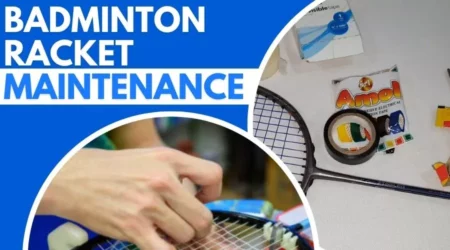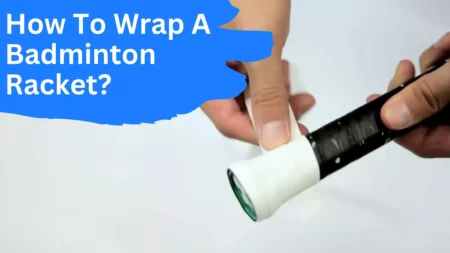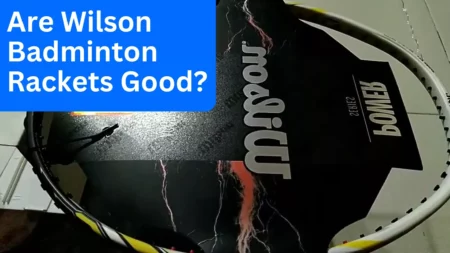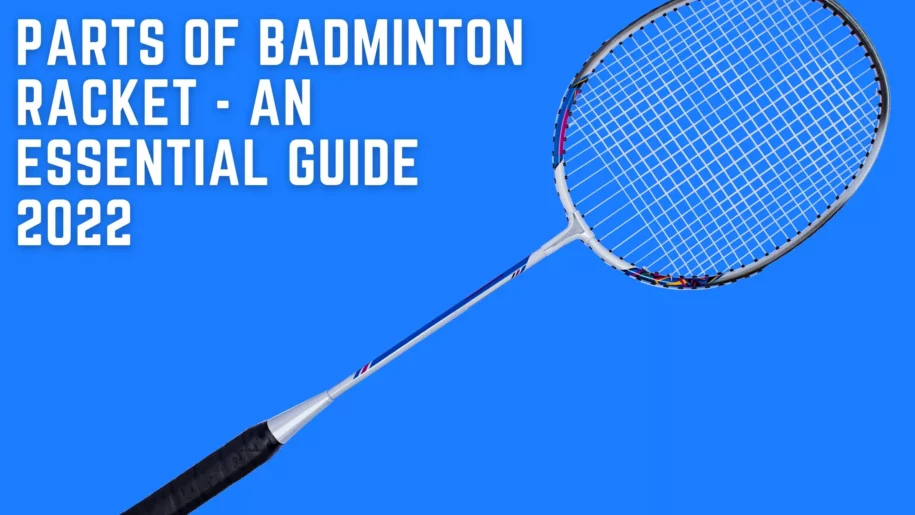
Badminton is an excellent racquet sport that combines speed, precision, and strength. It requires a lot of hand-eye coordination and strength to hit the shuttlecock back and forth.
Today, you will learn more about the several parts of a badminton racket and their functions.
To play badminton, you don’t need expensive or top-of-the-line rackets. A basic badminton set with two rackets and one shuttlecock should be enough for casual players.
When buying a racket, it’s best to get one with an extended and better grip as it helps in hitting shots more accurately and easily.
7 Badminton Parts Of Rackets
Rackets are made with synthetic and composite material and graphite/wooden shafts. Badminton rackets can also be made of other materials like fiber, copper, or aluminum.
All these materials are strong and durable enough to withstand the stress and strain of the game. Badminton rackets are made with graphite or carbon fiber shafts.
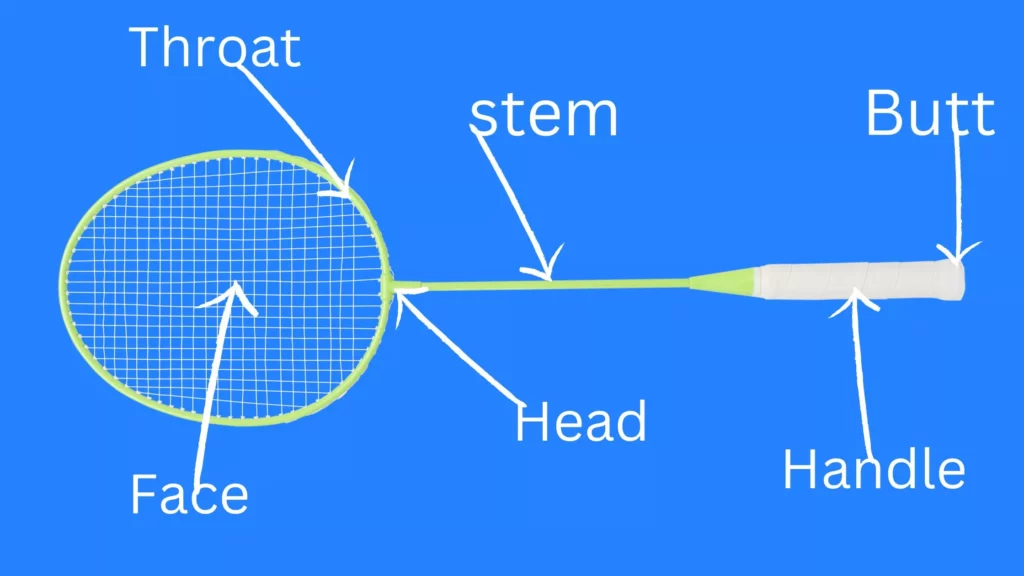
Carbon fibers are stronger and lighter materials which are used in airplanes, racing cars, and other vehicles.
Wooden shafts are used for badminton rackets that are specially made for beginners. They are easy to wield, and you can use them for years.
Frame
The handled frame is the outer part of the racket and holds the strings. The frame of the racket is very important as it helps in transferring the force from the racket to the shuttlecock.
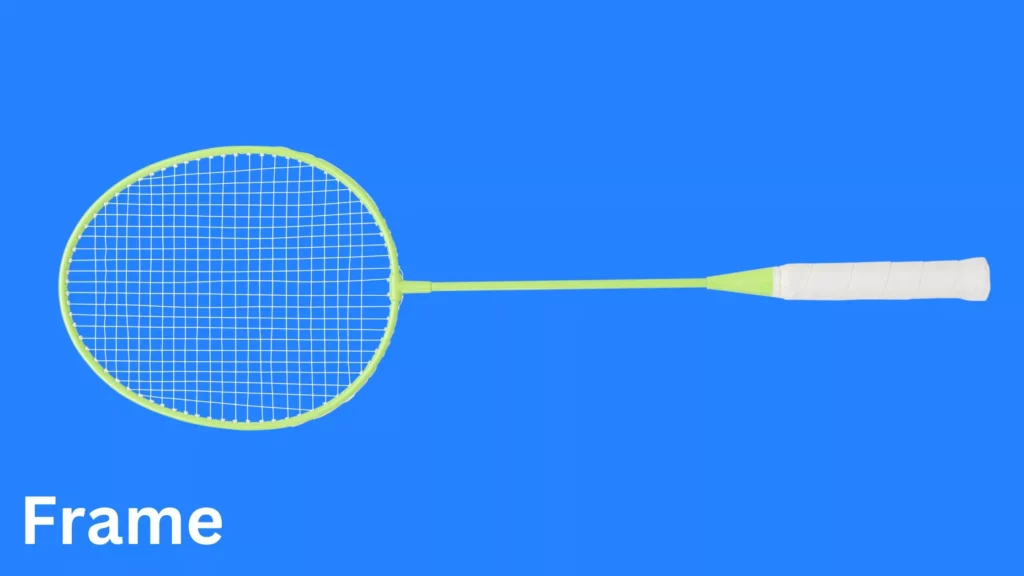
The fully strung frame is rectangular shape and holds the strings in place. It also adds weight to the racket to increase the power behind each shot. The thickness of the frame determines the stiffness of the racket.
A thicker frame is sturdier and offers better control than a slender frame. The frame of the racket is made of synthetic material like graphite. The thicker the frame, the less powerful it will be.
Head
The head of the racket is at the opposite end of the frame. It has a rounded and hollowed-out structure to hold the shuttlecock.
The head of the racket is also made of synthetic materials, and it is squarish and oval shaped head. The thickness of the head determines how powerful the racket is. A thicker head will be able to deliver more power than a thin one.
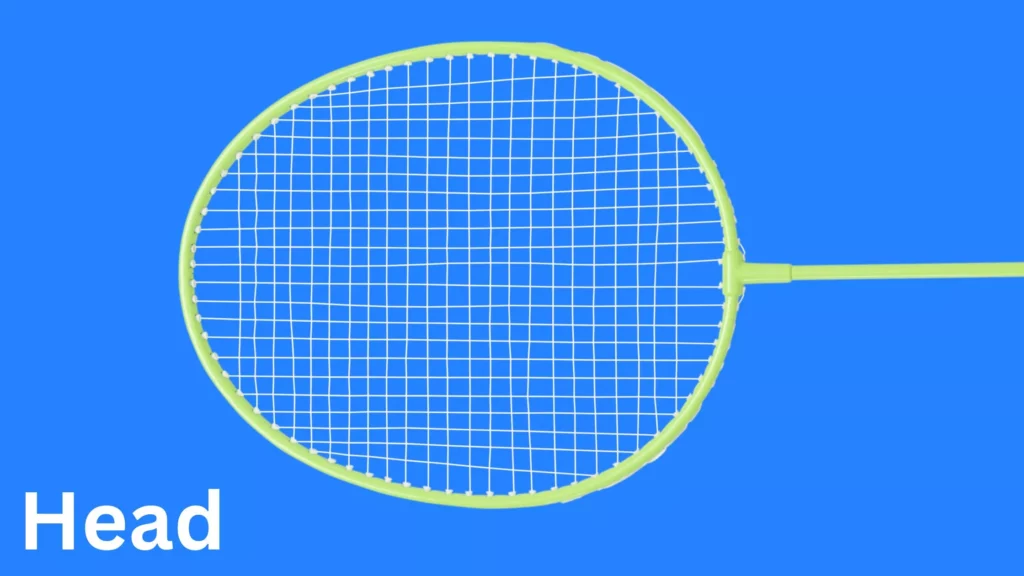
It is possible for the head to break if it is too thin. The head of the racket, however, is not very sturdy.
The impact of a shuttlecock hitting the racket may cause the head to chip and crack. To prevent this, you can use a badminton racket head protector.
It will help in preventing the head of your racket from breaking.
Stringed Area
The stringed area is the part of the racket where the strings are attached. The strings in this area are of different thicknesses and have different functions.
You can select the type of strings you want in your racket according to your playing style. The thicker the string, the more powerful it is.
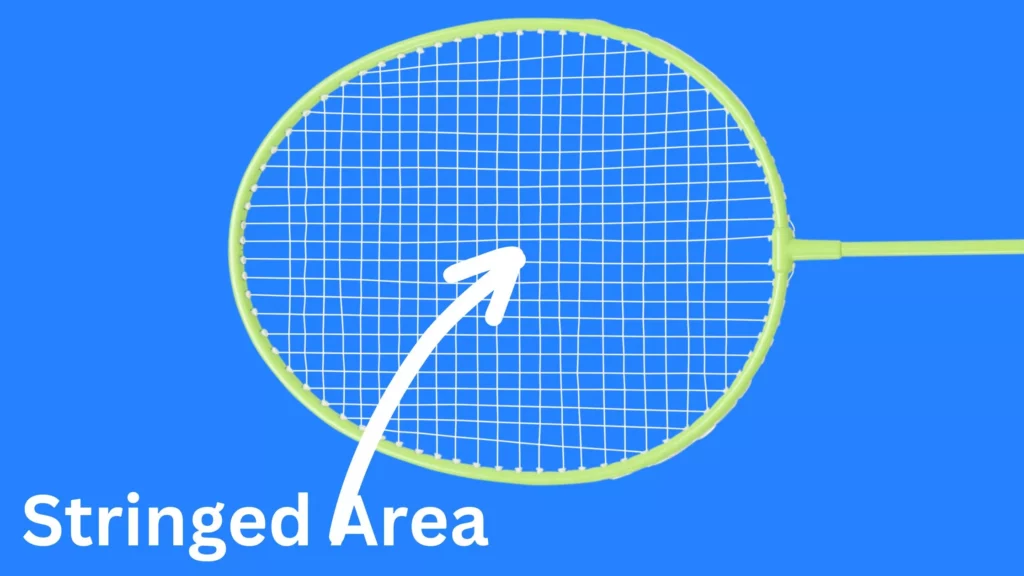
Thicker strings are not as flexible as the thinner ones. You should select a string that balances between the power and flexibility to get the best out of your racket.
Throat
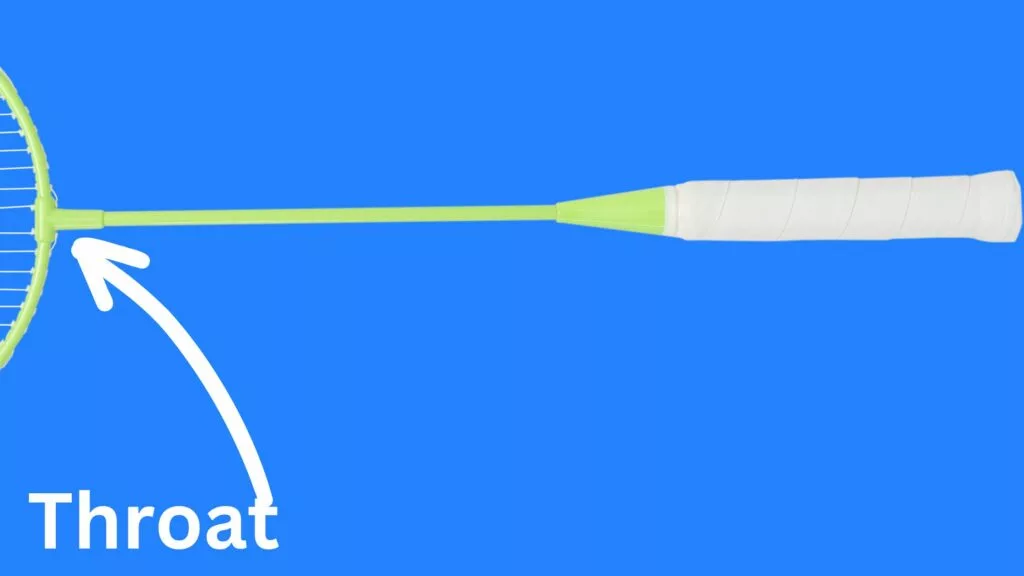
The throat is the part of the racket that lies between the stringed area and the head. It is thinner than the stringed area and the head.
You should select a racket with a thick throat as it will absorb the impact of the shuttlecock and reduce vibrations. A thick throat will be able to hold the shuttlecock well.
A thin throat might cause the shuttlecock to fall off the racket.
Shaft
The shaft is the long handle of the racket that you hold during play. The shaft of the racket is made of wood, graphite, or other synthetic materials.
You should get a shaft that is easy to wield and comfortable to hold. The weight of the shaft should be light enough to allow easy swinging of the racket.
A heavy shaft will make it hard to swing the racket. You should get a shaft that is the right size according to your hand size.
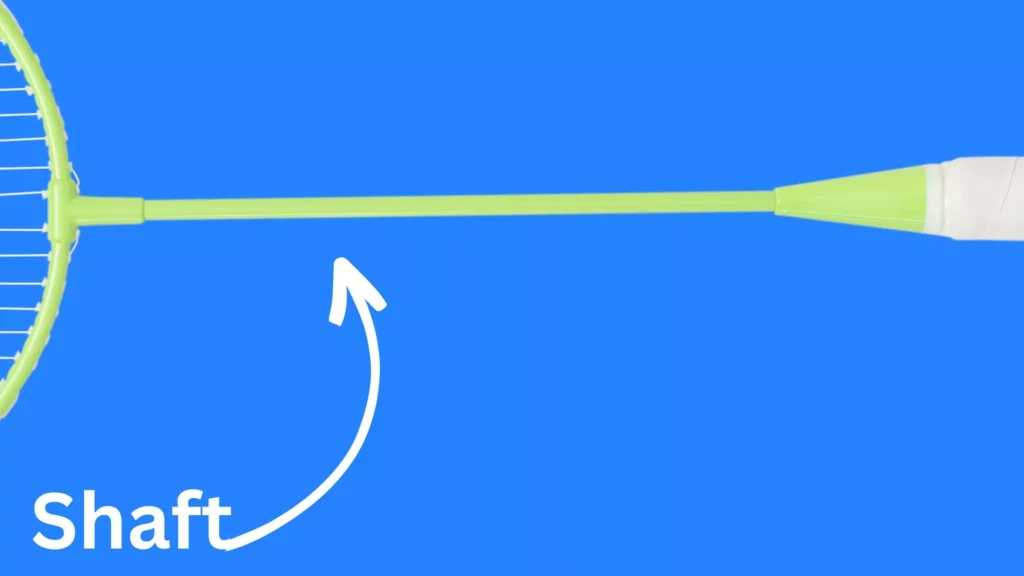
A short shaft will be ideal for people with short arms.
A long shaft will be perfect for players with long arms. You should also make sure that the shaft does not have any cracks or splinters as it may cause injuries when you play.
A cracked or splintered shaft may break and cause serious injuries.
Handle and Heads
The handle is the part of the racket where the frame and the shaft meet. There are two parts to the handle
the top handle and the bottom handle.
The top handle is at the top of the racket and the bottom handle is at the bottom. The heads of the racket are at the opposite ends of the frame.

They are larger in size and thicker than the frame. The top and bottom handles should be thinner than the heads to make it easy to wield the racket.
Bumper
The bumper is the part of the racket that protects the strings from being crushed. The strings of the racket are very thin and can be crushed easily. The bumper will protect the strings and extend their life span.
You should get a racket with a sturdy bumper that can withstand the impact of the shuttlecock without damaging the strings.
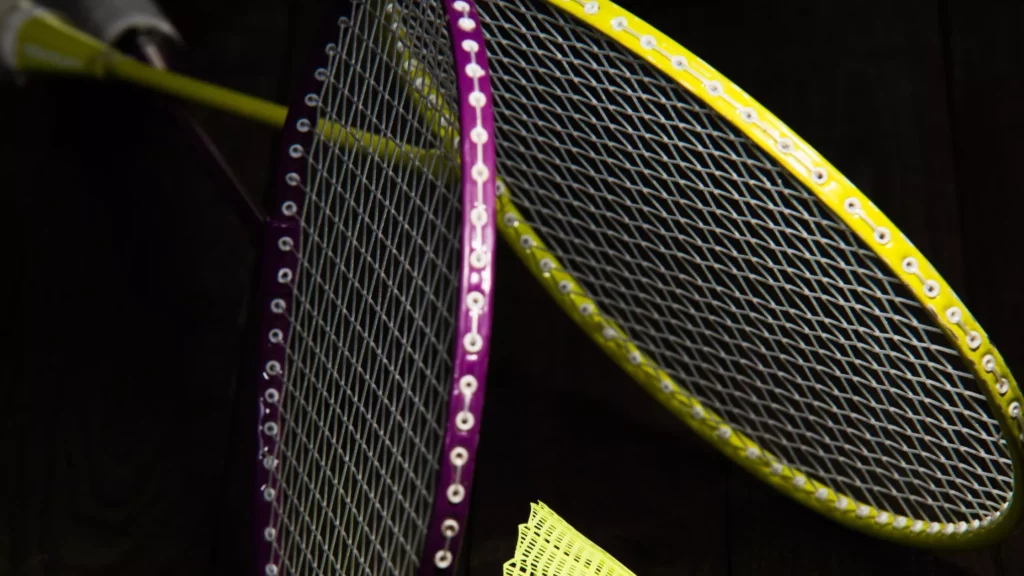
The bumper of a racket may break if it is too thin. You should select a thicker bumper that can withstand the impact of the shuttlecock and last longer.
Conclusion
The frame and head of the racket are the most important parts as these are the areas that face the impact of the shuttlecock.
The thicker and stronger these parts are, the longer your racket will last. The stringed area and the throat of the racket are also critical as they help in delivering power and control.
The thicker and stronger these parts are, the more powerful your shots will be and the more control you will have.
The shaft and handle of the racket are the areas that are affected the least during badminton. However, they are also important as they help in wielding the racket and holding it firmly.
You should get a shaft and handle that are light enough to make it easy to swing the racket. The shaft and handle should also be sturdy enough to withstand the impact of the shuttlecock.


